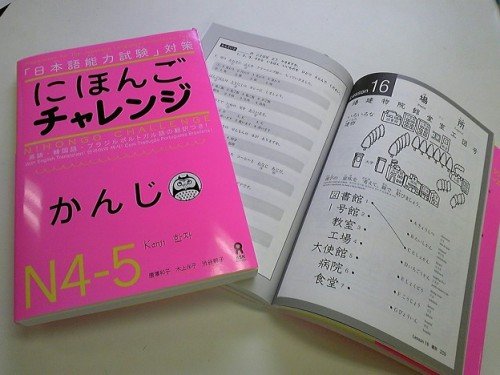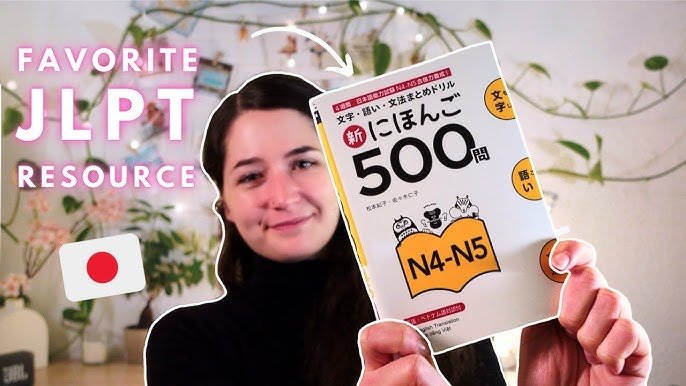
Learn about the differences between the JLPT N5 and N4 levels and decide which test is right for you.
If you’ve ever considered learning the Japanese language or expanding your proficiency in it, you’ve likely come across the Japanese Language Proficiency Test (JLPT) – a widely recognized benchmark for assessing one’s Japanese language skills. Both the N5 and N4 levels are for beginners, so how do you know which test is right for you? Should you take the N5 or the N4?
In this blog, we’ll delve into the intricacies of the JLPT N5 and N4, two of the foundational levels of the test. We’ll unravel the key distinctions between them, helping you understand which one might be the best starting point for your Japanese language journey.
Once you decide which test you’ll aim for, you could check out the JLPT preparation courses offered at TLS-The Japanese Language School.
To start with, let’s discuss what the JLPT actually is. The Japanese Language Proficiency Test, commonly referred to as the JLPT, is a globally recognized assessment designed to evaluate and certify an individual’s proficiency in the Japanese language. The test is divided into multiple levels, ranging from N5 (the most basic) to N1 (the most advanced), each targeting different levels of language proficiency. Whether you aim to study, work, or live in Japan, or you simply have a passion for the Japanese language and culture, the JLPT provides a structured way to gauge your language abilities and set clear goals for improvement.
While both N4 and N5 are beginner levels of the JLPT, the key difference lies in the depth of language proficiency required. The N5 focuses on basic grammar, common expressions, and simple sentence structures, making it ideal for absolute beginners.Reading comprehension and listening sections in N4 are more complex, and furigana is often omitted, requiring a higher command of kanji.
Nuances
The N4 is a little more advanced, so the test begins to use nuances. For example, what is the difference between the kanji for “person” and “to insert”? Or “when do you use atsui vs atatakai?”
Kanji
If you’re struggling with the first 100 kanji, then you should stick to the N5, but if you are pretty solid with the first 300 or so, then you are ready for the N4. The N5 focuses more on hiragana and katakana. You’ll also need to know both the Kunyomi (訓読み) and Onyomi (音読み).
Example: How is 新しい read?
A. あたらしい
B. あだらしい
C. あらだしい
D. しんしい
(Answer: A. あたらしい)
Reading
The N5 only requires reading short sentences, while N4 demands reading full paragraphs. N5 provides furigana for kanji; N4 does not.
Study Time
N5: 325–600 hours
N4: 575–1000 hours
Read More-: JLPT N1 Practice Test

N5 is the easiest level, and thus many people start with it. It tests some of the basics of Japanese, but certainly not all. If you can pass N5, you can have basic conversations, like talking about the weather, or shopping for groceries. But you cannot hold a perfect conversation about varied topics using correct grammar.
The N5 test requires you to know around 100 kanji and 800 vocabulary words, along with hiragana and katakana. It tests basic things like weather, common expressions, numbers and days of the week. You should also know the particles, such as “wa”, “ga”, “o”, “ni” and “de”, along with simple past tense.
The N5 is divided into three sections:
You need 80/180 to pass. You also must get 38/120 to pass the Vocabulary, Grammar and Reading sections, and 19/60 to pass the Listening.
Kanji-wise, you don’t need to know long compound words and sentences, the JLPT N5 tests simpler things, like 春 = haru (spring), or 私は食べています = watashi wa tabete imasu (I am eating).
The listening section is somewhat slower than real-life talking speed, so if you know the vocabulary you should be fine. The topics will be regular daily topics, like hobbies, work, school and the weather.
For the JLPT N4, you need to know around 300 kanji and 1,500 vocabulary words. In order to pass the N4, you’ll need to have spent a fair bit of time studying. While the exam is still considered beginner level, you cannot pass the N4 without putting in some study.
Some people have already studied some Japanese, but have never taken the JLPT. They may prefer to skip the N5 and go directly to the N4.
The N4 is divided into three sections:
You need 90/180 to pass. You also must get 38/120 to pass the Vocabulary, Grammar and Reading sections, and 19/60 to pass the Listening.
By the N4 level you’ll also need to know verb conjugations and conjunctions, although not all of them.
Read More-: JLPT July Exam 2025 Complete Guide
If you are like me and never studied grammatical terms in school, here’s an explanation.
In Japanese, verb conjugation is a crucial aspect of the language, and it varies based on tense, politeness level, and other factors. Verbs in Japanese are categorized into three groups: Group 1 (u-verbs), Group 2 (ru-verbs), and irregular verbs. Here’s a basic overview of verb conjugation in Japanese:
For the verb “taberu” (to eat):
In Japanese, a conjunction is a word or phrase used to connect words, phrases, or clauses within a sentence to show the relationship between them. Conjunctions play a vital role in structuring sentences and conveying meaning. There are several types of conjunctions in Japanese:
Coordinating Conjunctions (接続詞 – Setsuzokushi):
Subordinating Conjunctions (接続助詞 – Setsuzoku joshi):
Read More-: Arigato meaning in English
Did you know that you can try some practice questions on the official JLPT website in order to test your knowledge?
Try both levels and see which fits you best. If the N5 is too easy, go for the N4! If you can’t pass the N4 questions, start with N5.
For a more detailed analysis of your level, TLS- The Japanese Language School offers free consultations and level checks.
If you're just starting out or unsure about basic kanji and vocabulary, start with JLPT N5. But if you've already studied for a few months or taken a Japanese course, you might be ready for JLPT N4.
Use Jlpt ဖောင်တင်နည်း (JLPT registration methods) through the official site or consult TLS – The Japanese Language School for help with the registration process and preparation strategy for JLPT Exam.
Take advantage of official JLPT N5 practice tests and JLPT N4 test resources online. These mock exams give you a clear idea of the actual test format and difficulty.
Take Book Reference from here-: https://www.jlpt.jp/e/samples/sample09.html

1. Is N4 harder than N5?
Yes, JLPT N4 is significantly harder than N5. It involves more vocabulary, kanji, and grammar complexity.
2. Is N4 better than N5?
N4 is a higher level, and recognized as more advanced. It adds more value to your resume or academic profile.
3. Is N5 enough to get a job in Japan?
Not usually. JLPT N5 shows basic understanding. Most jobs in Japan require at least JLPT N3 or N2.
4. Which is higher, N4 or N5?
N4 is higher. The JLPT levels go from N5 (easiest) to N1 (most advanced).
5. Is N5 enough to travel Japan?
Yes! With JLPT N5, you’ll manage basic conversations in hotels, restaurants, or stations during your travel.
Whether you're aiming for N5 or N4, TLS – The Japanese Language School offers structured courses, mock tests, and expert guidance to help you succeed. Our personalized learning plans are perfect for beginners and intermediate learners.
Contact TLS-The Japanese Language School today to schedule your free consultation or take a level check to find out where to begin.